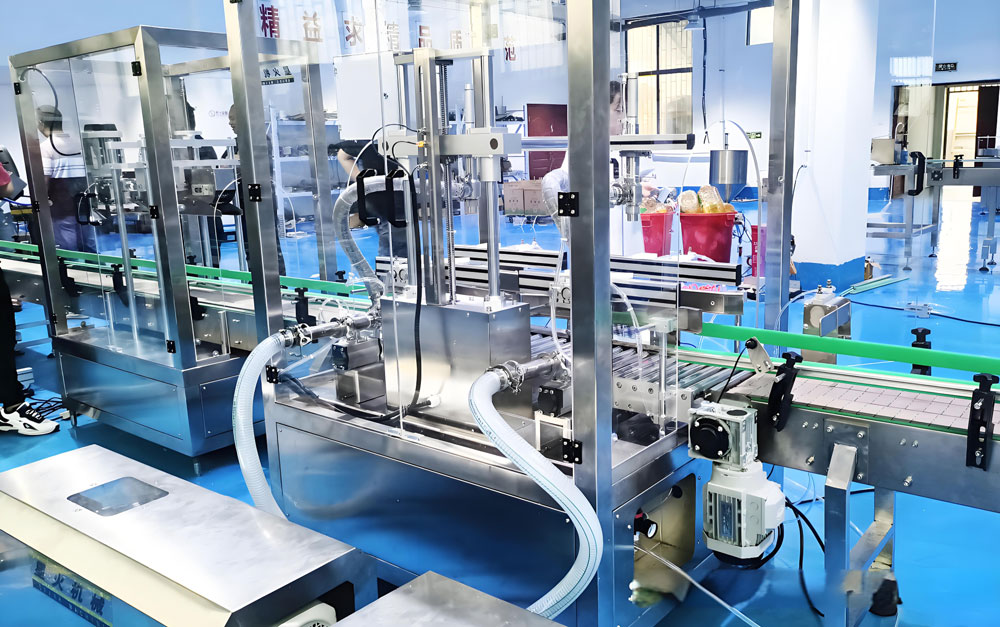
Tomato sauce is a staple in kitchens worldwide, beloved for its versatility and rich flavor. However, the journey from fresh tomatoes to the perfectly seasoned sauce on your plate involves multiple intricate steps. Ensuring quality at every stage of the production line is crucial for delivering a product that meets both safety standards and consumer expectations. This article delves into the essential quality control measures in a tomato sauce production line, highlighting the critical stages where quality is meticulously monitored and maintained.
The production of tomato sauce involves several stages, each requiring specific quality control measures to ensure the final product is safe, consistent, and flavorful. The primary stages include:
- Raw Material Inspection
- Processing and Blending
- Cooking and Concentration
- Filling and Packaging
- Storage and Distribution
The quality control process begins with the inspection of raw materials. Fresh tomatoes are the primary ingredient, and their quality directly impacts the final product. Key quality control steps at this stage include:
- Visual Inspection: Tomatoes are inspected for color, size, and any visible defects such as bruises or mold.
- Chemical Analysis: Tests for pesticide residues and other contaminants are conducted to ensure safety.
- Microbiological Testing: Samples are tested for harmful bacteria and other microorganisms.
Once the tomatoes pass the initial inspection, they are washed, sorted, and prepared for processing. Quality control measures during this stage include:
- Washing and Sorting: Tomatoes are thoroughly washed to remove dirt and debris. Sorting ensures only the best quality tomatoes are used.
- Blending: Ingredients are measured and blended according to precise recipes. Quality control ensures consistency in flavor and texture.
The cooking process is where the tomatoes are transformed into sauce. This stage involves:
- Temperature Control: Cooking at the correct temperature is crucial to achieve the desired consistency and flavor. Continuous monitoring ensures the sauce is neither undercooked nor overcooked.
- pH Levels: Maintaining the correct pH level is essential for preserving the sauce and preventing spoilage.
- Consistency Checks: Regular sampling ensures the sauce remains consistent in texture and thickness.
Once the sauce is cooked, it is filled into jars or cans and sealed. Quality control measures during this stage include:
- Sterilization: Containers are sterilized to prevent contamination.
- Filling Accuracy: Automated machines ensure each container is filled to the correct level.
- Sealing Integrity: Seals are checked to ensure they are airtight, preventing spoilage and maintaining freshness.
The final stage involves storing the sauce under appropriate conditions before distribution. Key quality control measures include:
- Temperature Control: Storage facilities are kept at optimal temperatures to preserve the sauce.
- Inventory Management: Proper rotation of stock ensures the oldest products are distributed first, maintaining freshness.
Quality control is essential in the tomato sauce production line for several reasons:
- Consumer Safety: Ensuring the product is free from harmful contaminants protects consumer health.
- Consistency: Maintaining consistent quality ensures consumers receive the same great taste every time.
- Regulatory Compliance: Adhering to food safety regulations prevents legal issues and potential recalls.
- Brand Reputation: High-quality products build trust and loyalty among consumers.
Modern tomato sauce production lines often incorporate advanced technologies to enhance quality control. These include:
- Automated Inspection Systems: Cameras and sensors detect defects and contaminants with high precision.
- Data Analytics: Real-time data analysis helps identify and address quality issues promptly.
- Traceability Systems: Advanced tracking systems ensure every batch can be traced back to its source, enhancing transparency and accountability.
Quality control is the backbone of a successful tomato sauce production line. From raw material inspection to final packaging, each stage requires meticulous attention to detail to ensure the highest standards of safety and quality. By implementing robust quality control measures and leveraging advanced technologies, producers can deliver a product that not only meets regulatory requirements but also delights consumers with every bite.
In conclusion, the quality control process in tomato sauce production is multifaceted and essential for producing a safe, consistent, and delicious product. By understanding and optimizing each stage of the production line, manufacturers can ensure their tomato sauce stands out in a competitive market, earning the trust and loyalty of consumers worldwide.
Pre :
Next :












 Small Scale Tomato Sauce Making Machine
Small Scale Tomato Sauce Making Machine Tomato Sauce Milling Machine
Tomato Sauce Milling Machine Tomato Sauce Grinding Machine
Tomato Sauce Grinding Machine Tomato Sauce Machine
Tomato Sauce Machine
Ready to Get Started?